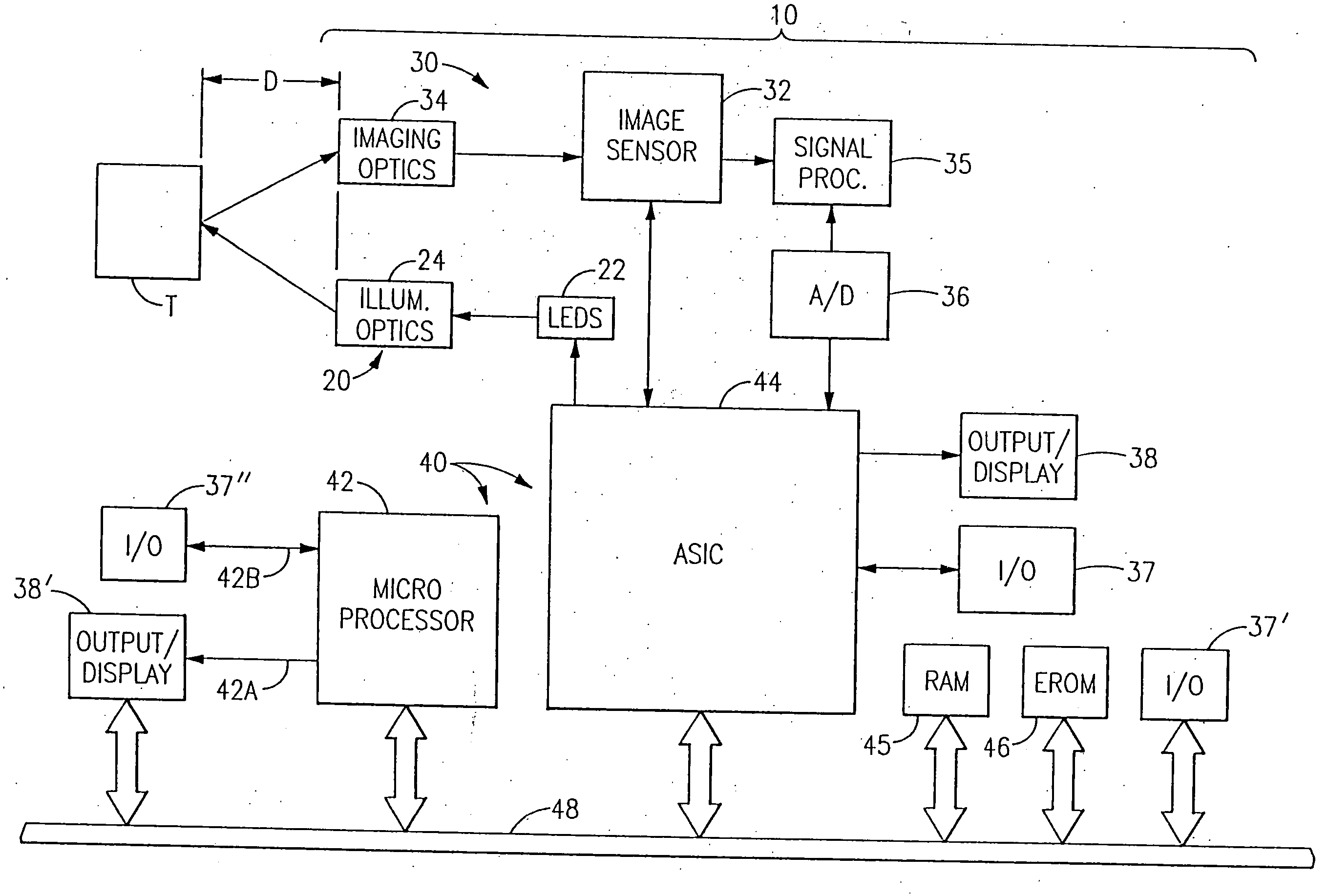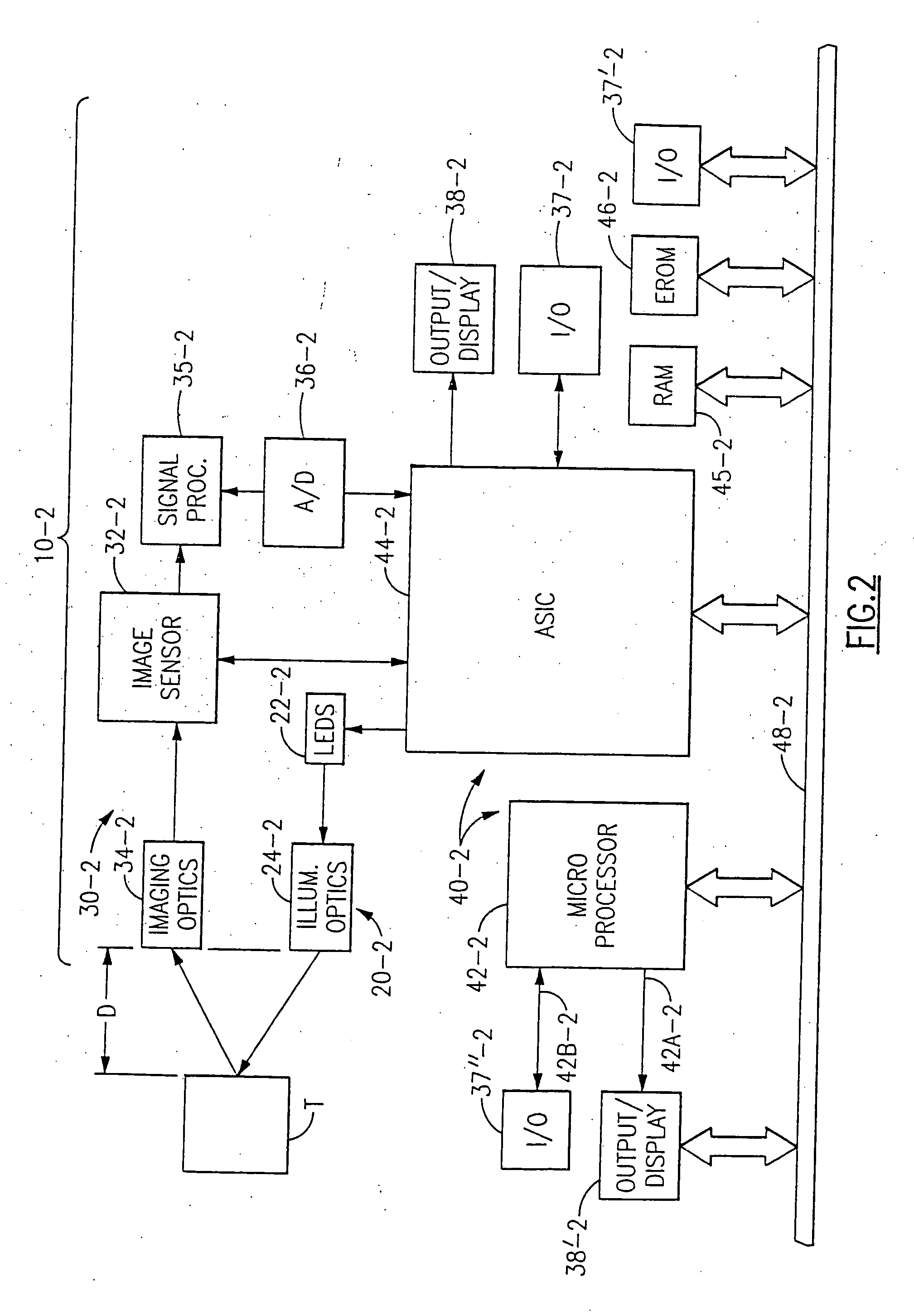Optical reader having two-dimensional solid state image sensor and light generator
a technology of image sensor and light generator, which is applied in the direction of visual presentation using printers, instruments, electromagnetic radiation sensing, etc., can solve the problems of affecting the reading process. the decoding operation lags behind the scanning operation, so as to solve the problem of ignoring the decoding operation for a long tim
- Summary
- Abstract
- Description
- Claims
- Application Information
AI Technical Summary
Benefits of technology
Problems solved by technology
Method used
Image
Examples
Embodiment Construction
[0350] Referring to FIG. 34 there is shown a block diagram of a bar code reader of a type which is suitable for use in practicing the present invention. This bar code reader may be a D bar code reader of the type sold by Welch Allyn, Inc., Skaneateles, N.Y. under the model designation ST-3000-22, provided that certain modifications to be discussed later are made thereto.
[0351] The bar code reader includes an illumination system which may comprise a plurality of 660 nm light emitting diodes 16 that illuminate a narrow strip or slice of a bar code symbol 4018. Reader 4010 also includes focusing optics 4019 which may be of the type described in U.S. Pat. No. 5,291,008, which is assigned to the assignee of the present invention, and incorporated herein by reference. Focusing optics 4019 causes light returning from the bar code symbol along a receive path 4014 to be focused or imaged upon a 1D image sensor 4017 which may be of the charge coupled type. Sensor 4017 develops analog signals ...
PUM
 Login to View More
Login to View More Abstract
Description
Claims
Application Information
 Login to View More
Login to View More - R&D
- Intellectual Property
- Life Sciences
- Materials
- Tech Scout
- Unparalleled Data Quality
- Higher Quality Content
- 60% Fewer Hallucinations
Browse by: Latest US Patents, China's latest patents, Technical Efficacy Thesaurus, Application Domain, Technology Topic, Popular Technical Reports.
© 2025 PatSnap. All rights reserved.Legal|Privacy policy|Modern Slavery Act Transparency Statement|Sitemap|About US| Contact US: help@patsnap.com



